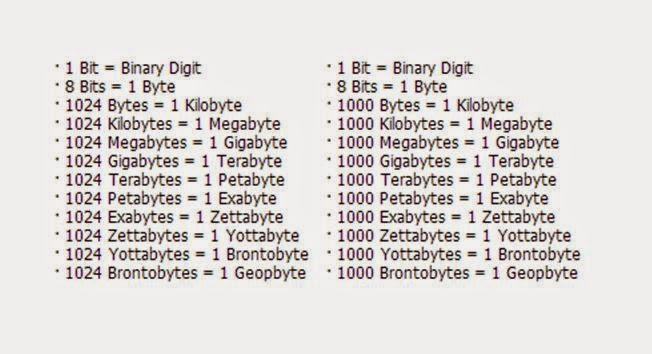BIT: a bit is
short for binary digit and is the smallest data in a computer. a bit has a
single binary value, either 0 or 1.
Mb: MB is short for
megabit, this is mainly used for download speed.
MB: MB, meg or
mbit is a common measurement used with computer storage media, a
megabyte is equal to 1,048,576 bytes.
KB: KB short for
kilobytes are most often used for small sized files.
GB: A GB is short
for gigabyte and is a measure of computer data storage capacity and is roughly
a billion bytes.
TB: Terabytes are
most often used to measure the storage capacity of large storage devices.
Bytes: The byte
is a unit of digital information in computing and telecommunications that most
commonly consists of eight bits.
1 bit (a 0
or 1 binary digit)
A bit is
the smallest amount that a computer can store (using ON or OFF in a circuit).
1 nibble =
4 bits
1 byte = 8
bits (an ASCII character takes 1 byte.)
So 1 byte =
2 nibbles!
1 kilobyte
= 1024 bytes
1 megabyte
= 1024 kilobytes (or 1024 x 1024
bytes)
1 gigabyte
= 1024 megabytes (or 1024 x 1024
kilobytes)
1 terabyte
= 1024 gigabytes

